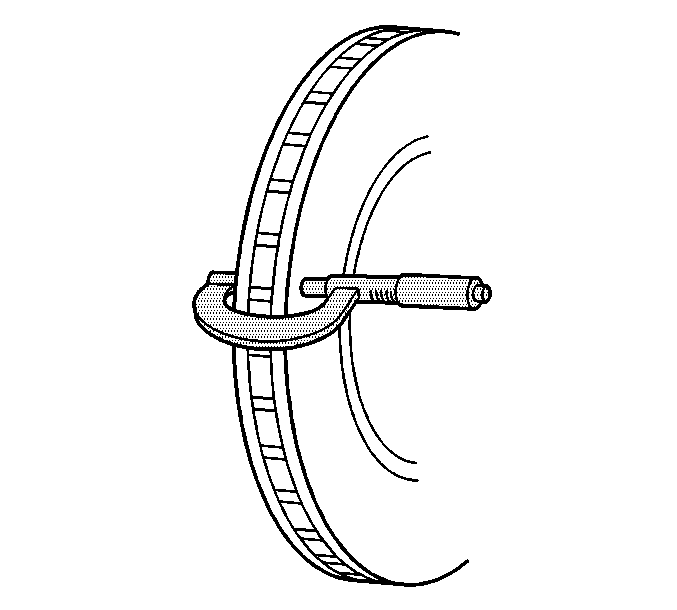For 1990-2009 cars only
Caution: Refer to Brake Dust Caution in the Preface section.
- If the inboard friction surface of the brake rotor is not accessible, reposition and support the caliper with the brake pads. Refer to Front Disc Brake Pads Replacement and/or Rear Disc Brake Pads Replacement .
- Clean the friction surfaces of the brake rotor with denatured alcohol, or an equivalent approved brake cleaner.
- Using a micrometer calibrated in thousanths-of-a-millimeter, or ten-thousanths-of-an-inch, measure and record the thickness of the brake rotor at four or more points, evenly spaced around the rotor.
- Compare the lowest thickness measurement recorded to the following specifications:
- If the lowest thickness measurement of the brake rotor is above the minimum allowable thickness after refinishing specification, the rotor may be able to be refinished, depending upon surface and wear conditions which may be present.
- If the lowest thickness measurement of the brake rotor is at or below the minimum allowable thickness after refinishing specification, the rotor may not be refinished.
- If the lowest thickness measurement of the brake rotor is at or below the discard thickness specification, the rotor requires replacement.

Ensure that the measurements are only taken within the friction surfaces and that the micrometer is positioned the same distance from the outer edge of the rotor, about 13 mm (½ in), for each measurement.
Specification
| • | Front brake rotor minimum allowable thickness after refinishing: 30.7 mm (1.209 in) |
| • | Rear brake rotor minimum allowable thickness after refinishing: 24.0 mm (0.944 in) |
| • | Front brake rotor discard thickness: 30.7 mm (1.209 in) |
| • | Rear brake rotor discard thickness: 24.0 mm (0.944 in) |
